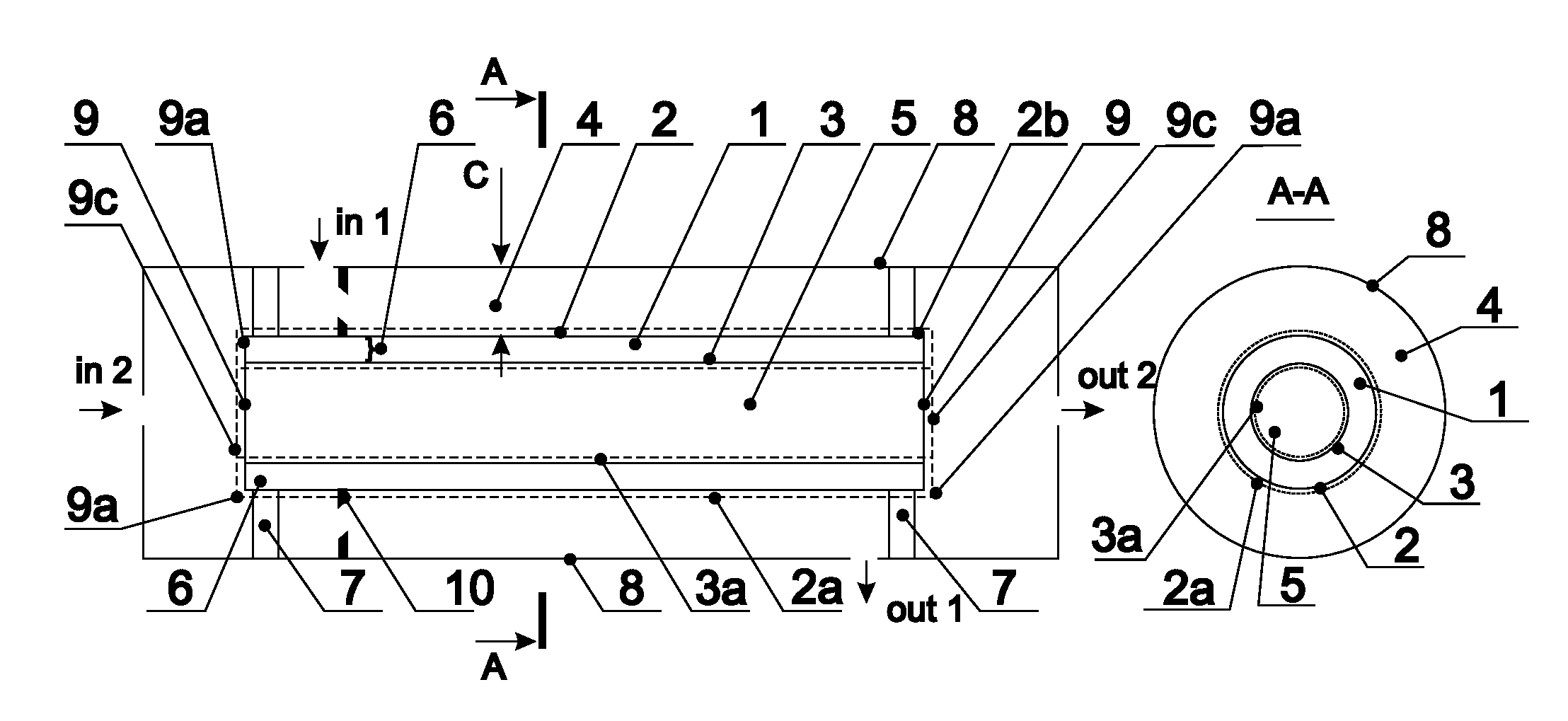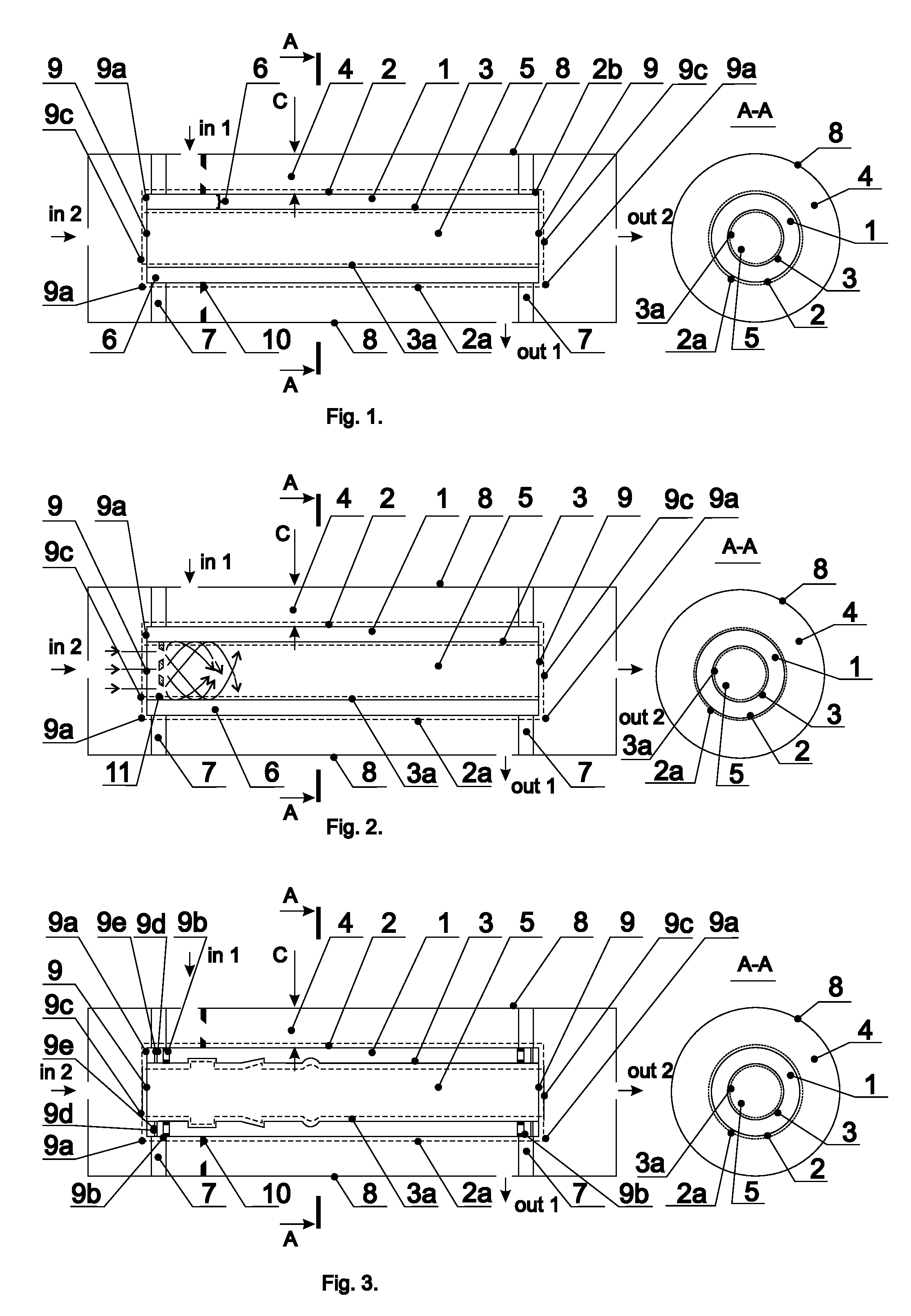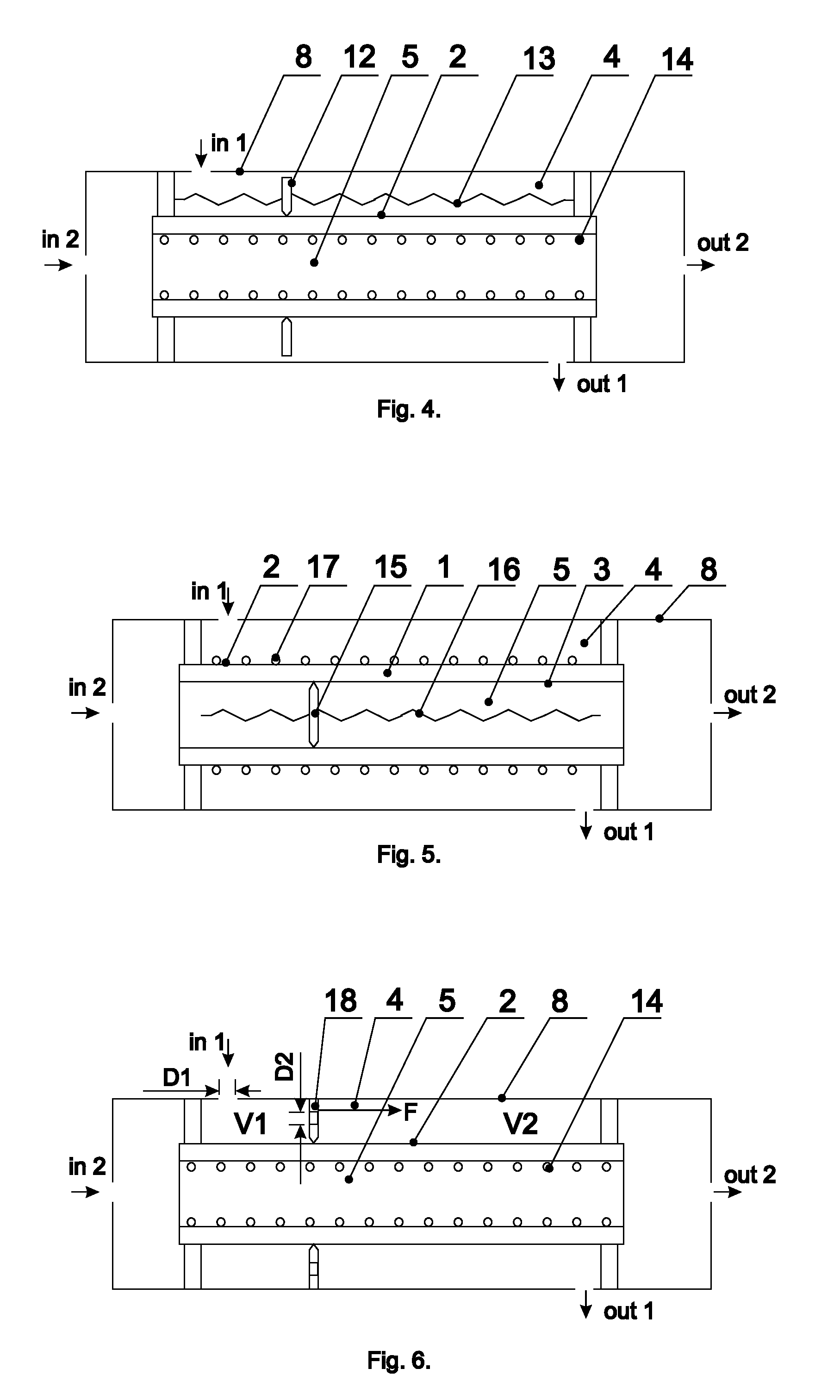System and method for liquid treatment
- Summary
- Abstract
- Description
- Claims
- Application Information
AI Technical Summary
Benefits of technology
Problems solved by technology
Method used
Image
Examples
first embodiment
[0118]As shown in FIG. 1 and FIG. 3, in the first embodiment, the liquid to be treated may get inside space 5 of lamp 1 through inlet “in2”, and after radiation, exit reactor 21 through outlet “out2”. The gas mixture (ambient air or oxygen) for generation of oxidizing agents (ozone, singlet oxygen, hydroxyl radical, and others) enters through inlet “in1”. The oxidizing agents-containing mixture exits housing of reactor 8 through outlet “out1”.
second embodiment
[0119]As shown in FIG. 2, in the second embodiment, the liquid to be treated may get inside housing of reactor 8 through inlet “in1”, and after radiation, exit through outlet “out1”. The gas mixture (ambient air or oxygen) for generation of oxidizing agents (ozone, singlet oxygen, hydroxyl radical, and others) generation enters housing of reactor 8 through inlet “in2”. After UV exposure, the oxidizing agents-containing mixture exits the apparatus through outlet “out2”.
[0120]System for Cleaning the Emitting Active Surfaces of the Lamp
[0121]The lamp cleaning system comprises a set of activities aimed at removing contaminants from the emitting surface of the lamp (a sleeve adjoining the liquid being emitted. The implementation of the cleaning system may employ chemical, abrasive, or mechanical approaches.
[0122]Under the chemical approach repeated with a certain periodicity, a chemical (or a mixture of chemicals) dissolvable in the liquid and capable of removing contaminants from the em...
PUM
 Login to View More
Login to View More Abstract
Description
Claims
Application Information
 Login to View More
Login to View More - R&D
- Intellectual Property
- Life Sciences
- Materials
- Tech Scout
- Unparalleled Data Quality
- Higher Quality Content
- 60% Fewer Hallucinations
Browse by: Latest US Patents, China's latest patents, Technical Efficacy Thesaurus, Application Domain, Technology Topic, Popular Technical Reports.
© 2025 PatSnap. All rights reserved.Legal|Privacy policy|Modern Slavery Act Transparency Statement|Sitemap|About US| Contact US: help@patsnap.com



